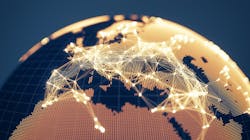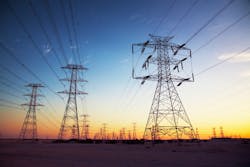Are European DSOs and Energy Communities the Next Innovation Disruptors?
In Europe, the higher penetration of distributed energy resources (DERs) is having a positive impact on the grid with energy loss reduction and possible reduction of voltage fluctuations, but for distribution system operators (DSOs), it can also create new many challenges.
The term, Local Energy Systems (LES), encompasses many types of local systems, including, for example, systems with energy generation owned and managed by energy communities, systems functioning under specific models such as the collective self-consumption model in France, Belgium, or Spain, the Mieterstrom model in Germany. But as well including some smart grids systems, local energy market systems, and microgrids with islanding capacity, to name some of the varied local systems developing in Europe.
Reflecting upon what could be seen as a simple change, from high-carbon centralized generation assets to low-carbon distributed assets, the energy transition brings many technical and deep economical and socio-cultural challenges. From a field mostly dominated by incumbents, the energy sector now finds other industries knocking at its door. It is becoming the scene of many innovative business models and, at last, we see individuals, small organizations, and players from other sectors forming energy communities to accelerate the pace of change, wanting to own part of the transition and to locally retain benefits from this revolution.
The increase of DERs — such as in the Nordics, where installed capacity increased by ~46% between 2005 and 2017 — is changing the nature of interactions between buildings, districts, cities, and the overarching energy system. The impact and control level of distributed assets on the grid varies depending on their nature and connection type. On the medium-voltage, assets such as combined heat and power (CHP) and wind turbines can be seen, whereas at low-voltage levels, there is the emergence of residential assets such as heat pumps, solar photovoltaics (PV), and electric vehicles (EVs).
In some cases, higher penetration of DERs can create new congestion problems. We have seen such an issue in the Netherlands, when after a successful campaign to incentivize the uptake of solar PV, the grid did not have enough capacity to cope with the extra electricity generation. Now, while Dutch operators struggle to connect new generation assets, grid reinforcement deferral (copper in the ground) is seen as a temporary solution. By using the platform GOPACS, flexibility providers can place orders on an energy trading platform. By including their location data, GOPACS checks if an order can solve DSO congestion requirements. The platform uses existing intraday energy markets and coordinates with the transmission system operator (TSO) to reduce congestion problems.
The pace of change to solve the decarbonization of Europe creates new problems of network management for system operators. As we saw with the example of the GOPACS platform, among proactive solutions is the development of new ways of using demand response with a trend toward a bottom-up approach of procuring flexibility. We see the emergence of three levels of demand side flexibility (DSF) — turning down demand loads, using batteries to provide short-term power boosts, dispatching local generators, and so forth — to manage the grid; at the transmission level with voltage and frequency management, at the distribution level with congestion management, and at the local level with local grid management and support to the distribution network.
Indeed, we see a trend toward DERs becoming increasingly managed within LES. The use of DSF at these three levels will necessitate better TSO-DSO coordination and better DSO-LES coordination. This clearly puts DSOs at a central pivotal point, using DSF as a strategy to decrease network management costs, investment costs, and working in coordination with LES to minimize the creation of new congestions ideally using them as one flexible asset.
While exploring the uptake of DSOs procuring commercial solutions for DSF across different countries in Europe, it became clear that the competitive dynamics of flexibility markets are being redrawn. The new European Union (EU) 'Clean Energy for All Europeans' legislative package sets new rules for DSOs, encouraging them to procure flexibility as one of the cost-effective solutions to solving grid issues. The member states must translate this into a regulatory framework. The final national regulation and the pace of implementation are key drivers that can provide commercial advantages and opportunities. DSOs and other flexibility stakeholders, such as aggregators and suppliers, by being ahead of the learning curve in their home market could seize interesting market shares from this new value stream and be ready to penetrate other markets with the strong advantage of being established. Meanwhile, smaller and less innovative DSOs may not rest on their laurels operating business-as-usual.
On the one hand, there are already many lessons to be learnt from early movers. On the other hand, DSOs may be accountable to new stakeholder types who could threaten concession renewals for those like in Germany who are typically granted concession contracts to operate the grids, while local authorities keep the grids' ownership. We have seen such a case when back in 2013 in Berlin, the cooperative BuergerEnergie Berlin (Citizen Energy Berlin), unsatisfied with the Vattenfall subsidiary Stromnetz Berlin and criticized for not embracing the transition fast enough, decided to compete against the DSO for control of the grid. Finally, in 2019, Stromnetz lost the grid concession rights to the German city of Berlin for a period of 20 years. From our study on DSO flexibility, it seems clear that DSOs are on board to embark on the innovative journey of delivering DSF solutions commercially and have unique opportunities to develop new flexibility markets, ensure better margins, and secure concession renewals.
The soaring number of DERs connected on networks is accompanied by a growth in LES creation with several drivers: lower capex with improved performance and falling costs of assets; innovative platforms for balancing and optimizing LES; innovating trading platforms; multiplication of investment sources such as crowdfunding platforms; and the Clean Energy Package providing a positive legal framework for energy communities, which is being translated into national regulation.
Depending on the nature of the projects, other factors may influence the creation of a LES. For instance, some industrial players may struggle with high electricity and grid connection costs, and mitigate them by requesting a lower-capacity grid connection and integrate DERs onsite. Some developers may mitigate the time it takes to get grid connection approvals by creating a microgrid.
The term LES covers a wide diversity of local systems in terms of architectures, ownership, and business models, at both local and national levels. This holistic approach allows us to draw comparisons and provide analysis on markets dynamic. From our research across different types of LES, we see three general trends in Europe:
- A rise in energy communities and their influence as European stakeholders;
- A race among industry stakeholders to find profitable and replicable LES business models. This comes after the withdrawal of support mechanisms in Europe such as the feed-in-tariffs;
- A rise of industry stakeholders seeking to shift their business models to new paradigms involving energy communities.
Navigating and succeeding in the complex world of LES requires an understanding of the many challenges and opportunities paving the way. These include relationships with network operators, the legal aspects — such as in France with the overly complex creation of an entity, Personne Morale Organisatrice (PMO) — to create a collective self-consumption project, and also different stakeholders' motivations. Regarding the latter, industry stakeholders should not underestimate the importance of grasping and adapting new driver types, not necessarily based on what might seem like logical thinking. Energy communities can be composed of individuals, small and medium enterprises (SMEs), and local authorities including municipalities. Within one community, conflicting motivations may be found. While the point of one participant could be to internalize environmental and climate change costs, for another the motive would be to source their energy locally and hence retain the benefits locally.
The fragmented nature of LES and their stakeholders explains why finding replicable and profitable business models proves to be such a difficult task. However, this represents a fantastic field of opportunities — for example, energy communities procuring flexibility at the DSO level — for all stakeholders including DSOs, utilities, aggregators, and communities to create unsiloed approaches for effective and fair business models.
About the Author
Rita Desmyter
Rita Desmyter is an energy analyst and business developer at Delta Energy & Environment (Delta-EE). Based in Paris after two years in the Edinburgh office, Desmyter manages projects within the Local Energy Systems research service and has specialized in Flexibility Research, providing support for a range of consultancy projects on various low-carbon and renewable technologies and development. She holds a MSc in Carbon Management from the University of Edinburgh. Her undergraduate degree was in Law, Economics, and Management from the University of Montpellier, where she graduated top of her class.

